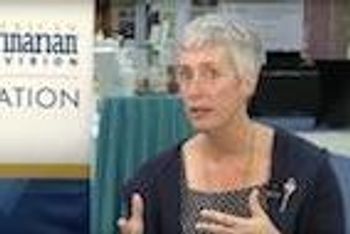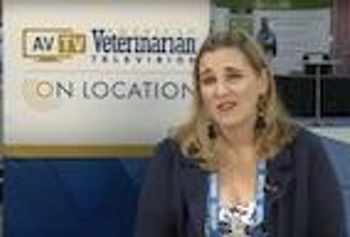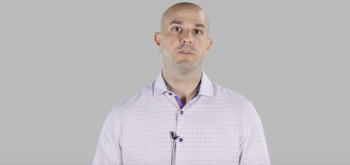
Jennie Tait, AHT, RVT, VTS, from Yu of Guelph Veterinary Dermatology in Ontario, Canada, discusses how a patient's health history offers clues in determining dermatology.

Jennie Tait, AHT, RVT, VTS, from Yu of Guelph Veterinary Dermatology in Ontario, Canada, discusses how a patient's health history offers clues in determining dermatology.

Danielle Provost, CVT, VTS (ECC), shares tips for talking to patients in emergency situations and helping them navigate the issue.

Focus on medical solutions, not on the naming of lung patterns, veterinary radiology expert says.

Craig Webb, DVM, a faculty member at Colorado State University Veterinary Teaching Hospital discusses the importance of going through a step by step process when diagnosing GI issues in cats.

Putting some plants around the clinic? Make sure they'll stand up to being trampled and peed on.

Specialists lean on their veterinary technicians as extra sets of handsand eyes.

Veterinary behaviorist Dr. Lisa Radosta shares tips for dealing with antagonistic tabbies.

Doug Knueven, DVM, CVA, CVC, CVCH, the owner and medical director of Beaver Animal Clinic in Pennsylvania, explains that although there are differences in the lasting effects and who can perform the modalities, acupuncture and acupressure are really quite similar.

Specializing in dermatology requires detective-like work to distinguish what your patient might be suffering from.

For Lorelei D’Avolio, LVT, VTS (Exotics), CVPM, practice manager at The Center for Avian and Exotic Medicine in New York, being a veterinary technician is incredibly rewarding. Particulalry, D’Avolio loves having contact with her patients and seeing them through every step of their care.

You may be leaving clinic efficiencies on the table by under utilizing staff superstars.

Having trouble locating a small organ on your patient during an ultrasound? Mark Howes, DVM, DACVR, radiologist at the Veterinary Specialty Center in Buffalo Grove, Illinois, says it's all about remembering anatomy basics.

Foster rivalries (and, yes, camaraderie) on your crew.

As the enteric zoonoses activity lead at the CDC, Megin Nichols, DVM, MPH, DACVPM, is tasked with responding to the increase of zoonotic diseases in the United States, particularly Salmonella and E. Coli.

Techs are well suited to provide guidance to pet owners in upsetting and unfamiliar circumstances, expert says.

Although a growing number of emergency management organizations are including veterinarians, there is still a lot of work to be done.

Brenna Fitzgerald, DVM, DABVP (Avian Practice), associate veterinarian at the Medical Center for Birds in Oakley, California, discusses how diagnosing respiratory disease in chickens can be challenging, including the potential for crossover with reproductive tract disease.

A thorough patient history is vital to diagnosing a flea allergy, says Stephen D. White, DVM, DACVD, professor of medicine and epidemiology at the University of California, Davis School of Veterinary Medicine.

This veterinary surgeon has seen it all ... installed in the wrong places. Here are a few things to think about in your surgical suite when you build a new hospital or knock the walls around in your current one.

Daniel Mills, BVSc, PhD, FRCVS, DECAWBM, professor of veterinary behavioral medicine at the University of Lincoln, explains how to differentiate between fear and frustration—and instances where the 2 interact.

This DVM says "the veterinary nurse is a sister profession"and a critical part of the veterinary healthcare team.

What is Fear Free Happy Homes? Julie Reck, DVM, founder and owner of the Veterinary Medical Center of Fort Mill, South Carolina, explains.

Anne Barger, DVM, MS, DACVP, clinical professor in pathobiology at University of Illinois, discusses why cysts and lumps are the easiest—and most common—to aspirate.

This imaging specialist says techs are key to his practice productivity.

Veterinary architect shares the features that teams love.

Tom Cardy, BSc, BVetMed, PhD, MRCVS, a lecturer in veterinary neurology and neurosurgery at Royal Veterinary College (RVC) in London, England, explains some of the research and teaching methods being studied at RVC.

Genetic testing isn't about finding a cure.

Many donor programs for cats find donor cats through animal rescues, explains JD Foster, VMD, DACVIM (SAIM), internist and director of extracorporeal therapies at the Friendship Hospital for Animals in Washington, D.C. But with one requirement.

Which immunosuppressive drug is better to treat veterinary patients: azathioprine or mycophenolate? Andrew Mackin, BVMS, MVS, DVSC, DACVIM, professor and department head at Mississippi State University College of Veterinary Medicine, says it has a lot to do with your previous experiences.

Interested in becoming a veterinary social worker? Sandra Brackenridge, LCSW, a veterinary social work consultant, explains how to get started.